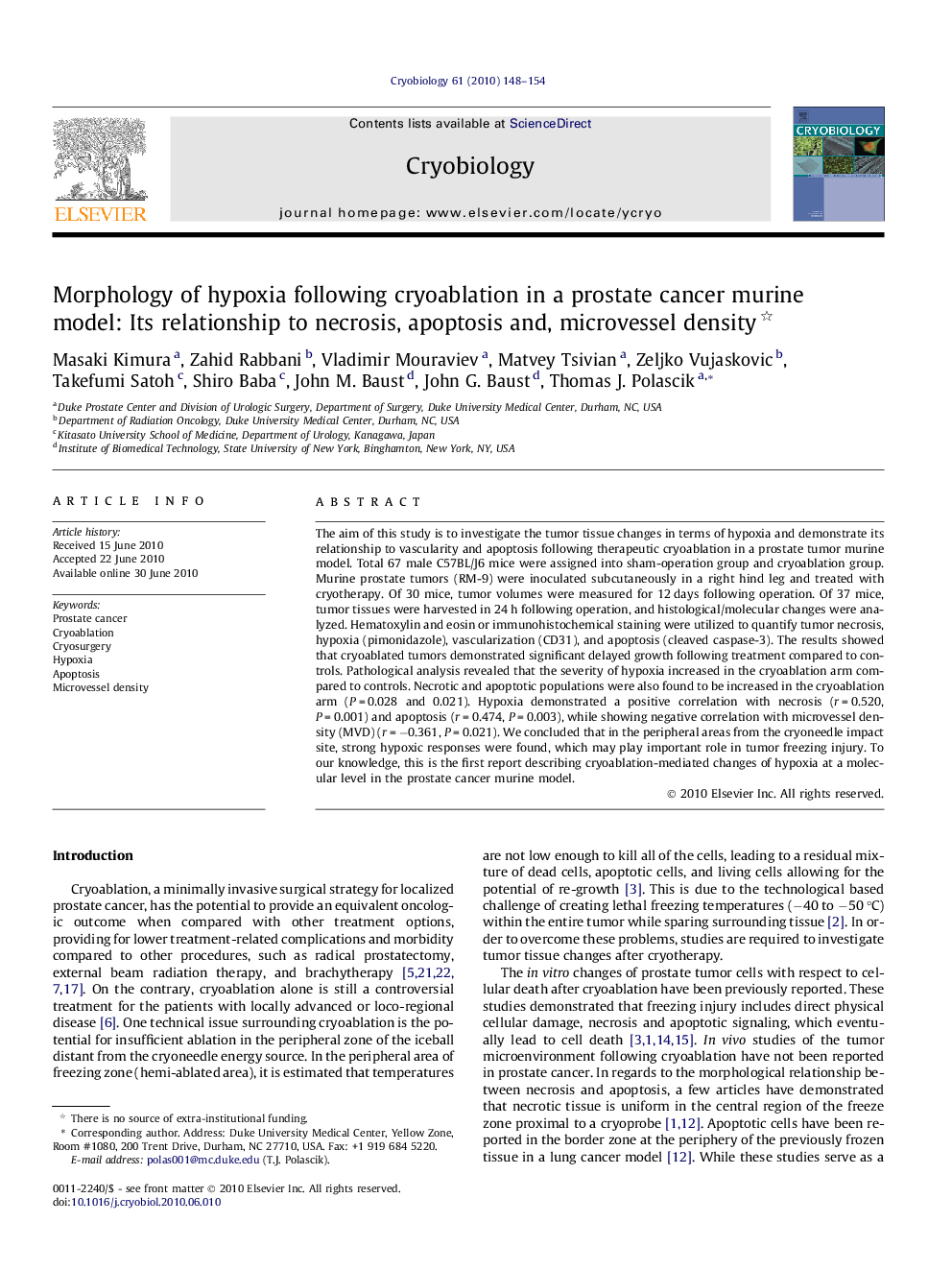| Article ID | Journal | Published Year | Pages | File Type |
|---|---|---|---|---|
| 2168521 | Cryobiology | 2010 | 7 Pages |
The aim of this study is to investigate the tumor tissue changes in terms of hypoxia and demonstrate its relationship to vascularity and apoptosis following therapeutic cryoablation in a prostate tumor murine model. Total 67 male C57BL/J6 mice were assigned into sham-operation group and cryoablation group. Murine prostate tumors (RM-9) were inoculated subcutaneously in a right hind leg and treated with cryotherapy. Of 30 mice, tumor volumes were measured for 12 days following operation. Of 37 mice, tumor tissues were harvested in 24 h following operation, and histological/molecular changes were analyzed. Hematoxylin and eosin or immunohistochemical staining were utilized to quantify tumor necrosis, hypoxia (pimonidazole), vascularization (CD31), and apoptosis (cleaved caspase-3). The results showed that cryoablated tumors demonstrated significant delayed growth following treatment compared to controls. Pathological analysis revealed that the severity of hypoxia increased in the cryoablation arm compared to controls. Necrotic and apoptotic populations were also found to be increased in the cryoablation arm (P = 0.028 and 0.021). Hypoxia demonstrated a positive correlation with necrosis (r = 0.520, P = 0.001) and apoptosis (r = 0.474, P = 0.003), while showing negative correlation with microvessel density (MVD) (r = −0.361, P = 0.021). We concluded that in the peripheral areas from the cryoneedle impact site, strong hypoxic responses were found, which may play important role in tumor freezing injury. To our knowledge, this is the first report describing cryoablation-mediated changes of hypoxia at a molecular level in the prostate cancer murine model.
